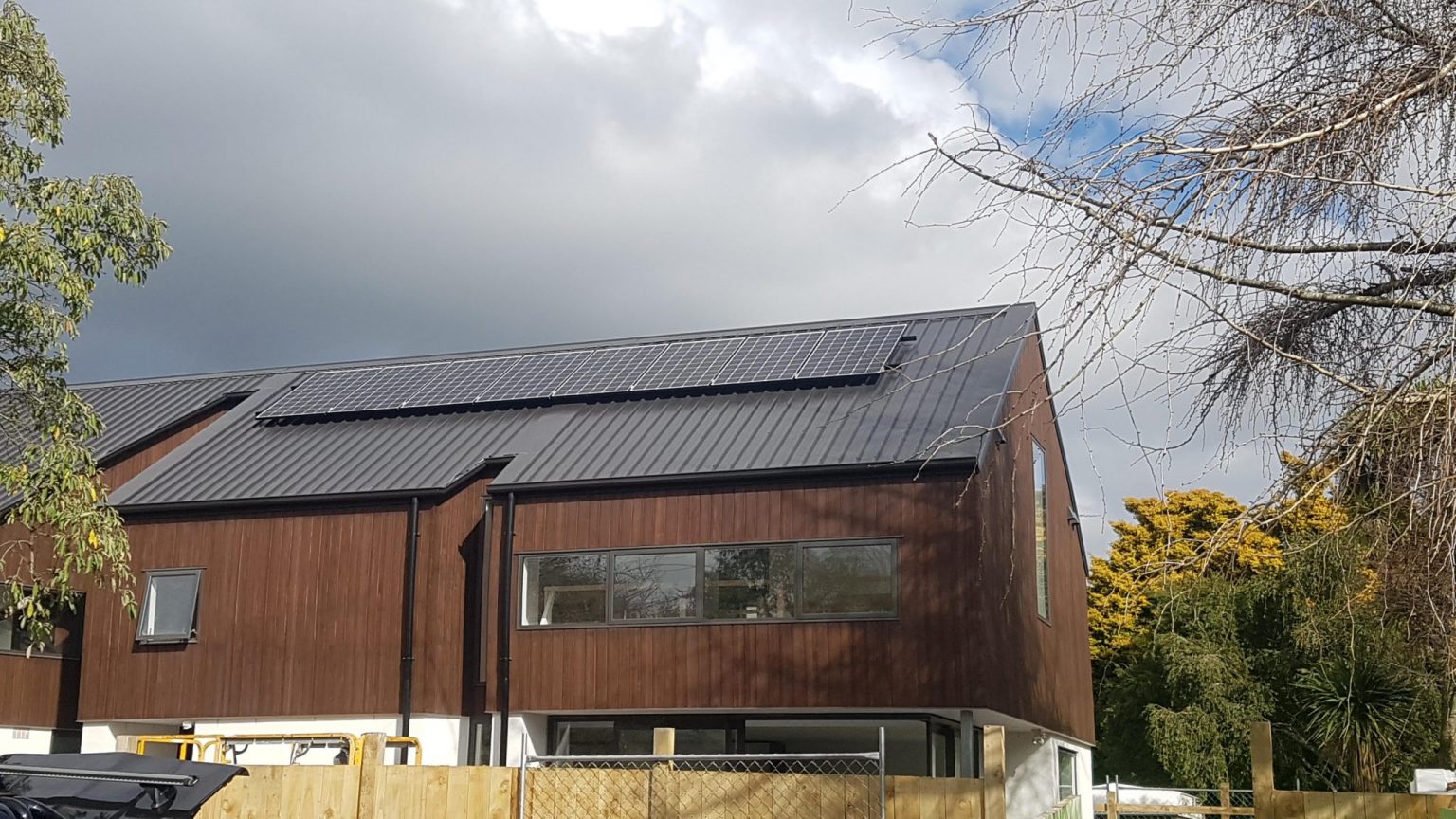This client was developing a home to live in as well as an adjacent duplex house at the same time; a modest 2.48kWp system was required to service each dwelling. Each system consisted of 8 x 310W Trina Honey M Plus modules, and a Solax String Inverter.
The main house had a pitched North facing roof, so standard flush mounting with black rails and clamps to complement the black framed modules were appropriate; whereas the duplex had a shared roof that was west facing roof with a very low pitch, so flush mounting would have resulted in very low generation.
In order to maximise the generation potential of the Modules on the Duplex, an alternative ‘tilt mount’ system was used in order to achieve a north facing Module at the optimum pitch for best results. In any tilt mount situation where there are multiple rows of modules, it is vital to space the rows sufficiently so that the front row does not cast shade on those behind it. In this case there were two rows of 8 modules so appropriate spacing was a key element of the layout plan in the design phase.
Although tilt mounting will maximise generation by elevating to optimum 30° pitch, it is not as desirable from a visual perspective. But in this case, it had the double benefit of also offsetting the westerly roof fall as the modules were northward orientated. In this case the duplex had a parapet wall that conceals the panels from the street view, but often in a multi storey home, the height of the house conceals the elevated panels from ground view. In situations where efficiency outweighs aesthetics, tilt mounting is valuable. However, we assess the added benefit of extra generation against the additional cost of the tilt mount hardware before making a recommendation.
